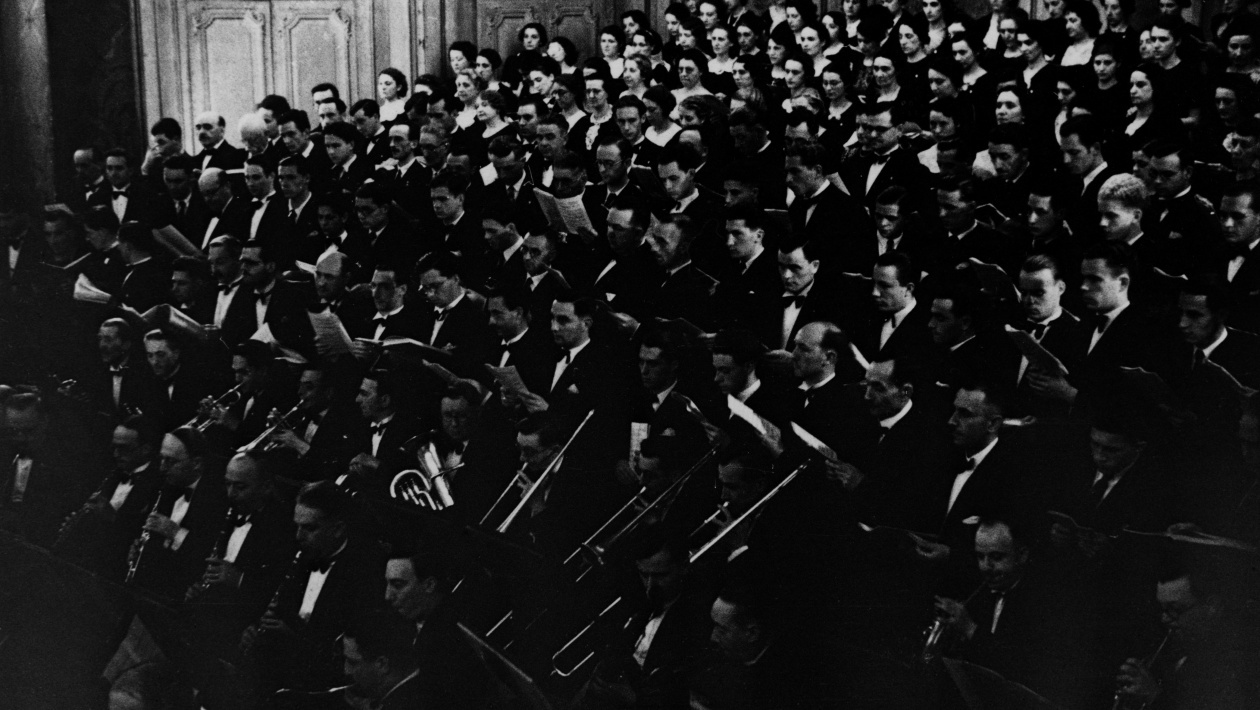Over a century of history
In 2005, the Orchestre national de Lyon celebrated its centenary. This respectable age makes it one of the oldest French orchestras. Under its current status as a permanent orchestra financed by the City of Lyon, the ONL is more recent: this step was taken in 1968 at the joint initiative of Lyon’s cultural councillor, Robert Proton de la Chapelle, and Marcel Landowski, Music Director at the Ministry of Arts and Letters. But if the future ONL was one of the first orchestras to reap the benefits of the Landowski Plan for the organisation of symphony orchestras and concerts in France, it was because it simply entailed developing and giving permanent status to the symphony orchestra that had been present in Lyon since 1905, namely the Société des Grands Concerts de Lyon.
Georges Martin Witkowski
The Société des Grands Concerts de Lyon was founded by Georges Martin Witkowski (1867-1943). Witkowski was born in Algeria, the son of an officer who died when the boy was two years old. This largely self-taught musician owed most of his musical education to his mother, who was of Polish descent (the “Witkowski” was added to his patronym “Martin” at the request of his grandfather, who raised him). Although he took up a career in the military like his father, he continued to develop his passion for music with the advice and encouragement of Emmanuel Chabrier, César Franck, Guy Ropartz and Vincent d’Indy. After settling permanently in Lyon in 1895, he made it his goal to develop the city’s musical life. Following the success of a choral society, a Schola Cantorum founded with Charles Bordes in 1903 along similar lines to its sister establishment in Paris, and then the creation of the Société des Grands Concerts de Lyon in 1905, Witkowski left the army in 1906. In 1924, he succeeded Florent Schmitt at the head of the Conservatoire de Lyon, where he remained until 1941.
Société des Grands Concerts de Lyon
The Société des Grands Concerts was an association of key figures from trade, banking and the medical profession that, at its inception, was composed of 80 musicians. To avoid scheduling conflicts, Witkowski was careful not to recruit them from either the Conservatoire or the Opera. The first concert was given on 28 November 1905 in the Folies-Bergère venue, situated on avenue de Noailles (now avenue Foch). The famous Belgian violinist Eugène Ysaÿe played Lalo’s Symphonie espagnole in a programme also comprising Bach, Beethoven, Saint-Saëns and Wagner.
Salle Rameau
The Folies-Bergère venue soon proved inadequate and it was decided to build a new concert hall at the foot of the Croix-Rousse hill. The first stone was laid in spring 1907 by the French president, Armand Fallières, and the President of the Council, Georges Clemenceau. The work was managed by the architects François Clermont and Eugène Riboud, who had already built 25 buildings in the vicinity. This Art nouveau concert hall, named after the composer Jean-Philippe Rameau, provided seating for 1,650 concert goers and used the same tried-and-tested interior design as the Gewandhaus in Leipzig. The inauguration on 8 November 1908 was marked by protocol blunders. In his speech, the mayor, Édouard Herriot, mentioned neither the founder and artistic director of the Société des Grands Concerts, Georges Martin Witkowski, nor the association’s chairman, Maurice Vallas. The orchestra played a work by Rameau (an extract from Les Fêtes d’Hébé) and Beethoven’s Symphony No. 9.
Un répertoire éclectique
In these early years, the orchestra’s repertoire was particularly eclectic, ranging from Monteverdi’s L’Orfeo and Bach’s Passions to contemporary French music and in particular that of Vincent d’Indy, a close friend of Witkowski and frequent guest conductor. Beethoven was also one of Witkowski’s favourite composers and his Ninth Symphony became a staple of the repertoire common to both the Schola Cantorum and the Société des Grands Concerts. Works by Saint-Saëns, Franck, Lalo, Chausson and Wagner and Schumann’s piano concerto were regular features. Brahms, Dvořák, Berlioz, Debussy and Ravel, on the other hand, were seldom heard.
After the First World War, the repertoire became more diverse, branching out to include Stravinsky’s ballets, incursions into Russian music (Rimsky-Korsakov, Borodin, Mussorgsky) and recent works by Honegger, Roussel, Dukas, Ibert, Falla and two young composers from Lyon, Antoine Mariotte and Pierre-Octave Ferroud. Francis Poulenc was invited there for the first time in 1930, as soloist in his own Aubade. It was to be the beginning of a fruitful collaboration. Another notable event was the 1934 performance by Karol Szymanowski, playing the piano part of his own Symphonie Concertante.
The venue has also hosted performances by a string of illustrious soloists, including: pianists Blanche Selva, Yves Nat, Alfred Cortot, Marguerite Long and Robert Casadesus, the harpsichordist Wanda Landowska, cellist Pablo Casals, violinists Jascha Heifetz, Jacques Thibaud, Ginette Neveu, Zino Francescatti, Christian Ferras and Georges Enesco, singers Claire Croisat, Germaine Lubin, Jane Bathory, Ninon Vallin, Suzanne Balguerie and the baritone Charles Panzéra.
